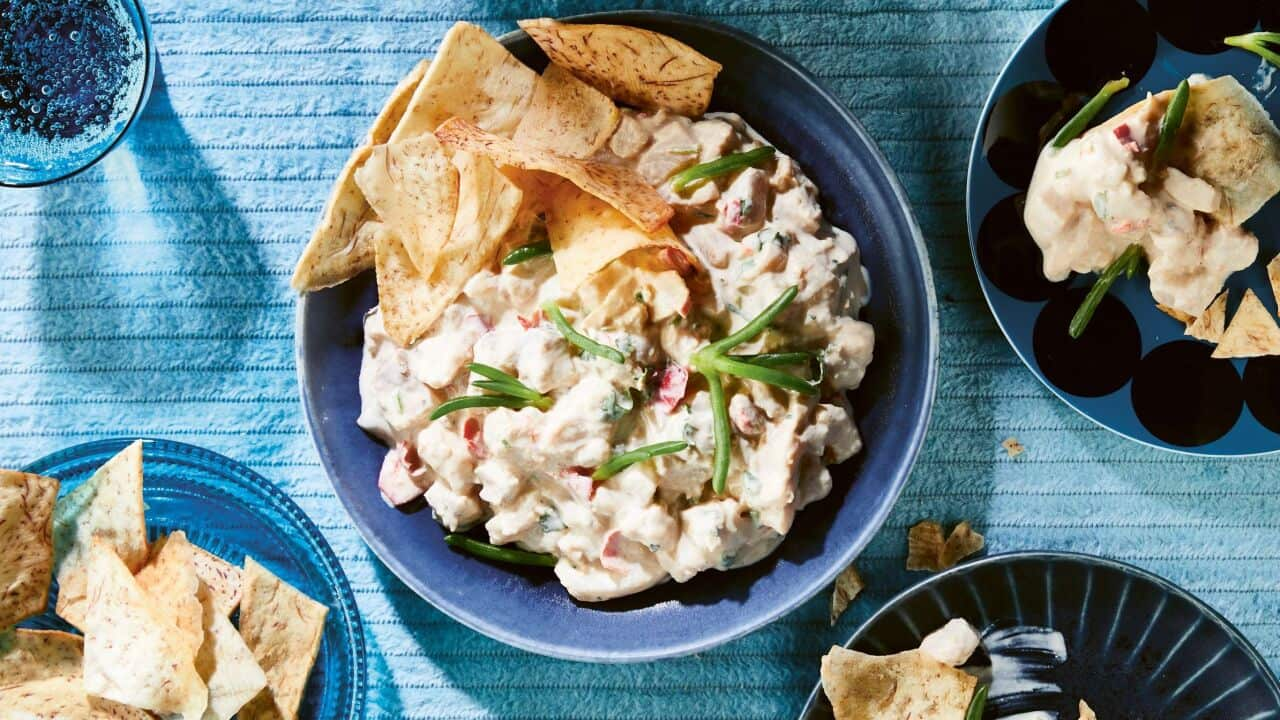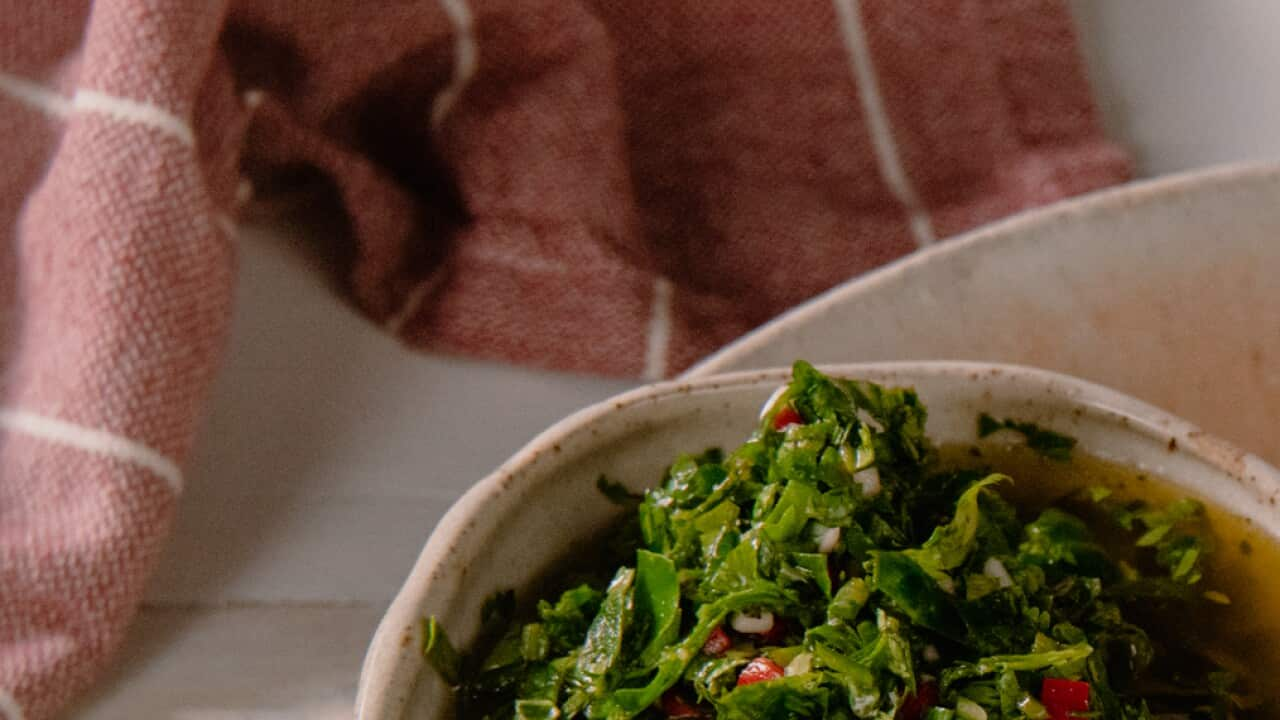Stream free On Demand

Island Echoes With Nornie Bero
series • cooking
PG
series • cooking
PG
Stretching between Australia's northern tip and Papua New Guinea lies the Torres Strait, a shimmering expanse of water where the Pacific and Indian Oceans meet. This remarkable marine crossroads is home to 133 islands, with 38 of them inhabited by communities who have maintained their distinct cultural and culinary identity for generations.
In her Melbourne restaurant, , and her , and of course, with her show , and cultural ambassador is on a mission to showcase the unique fingerprint of the area’s cuisine. She's passionate about dispelling a common misconception: traditions are all the same.
"I think there’s a miscommunication that we don't have a cuisine – but we do," Bero explains. " is the lifeblood of our islands. Our whole culture revolves around how we hunt and gather for food, and it's in our storytelling, and it's in who we are".

Nornie Bero's Mabu Mabu cookbook features plenty of Indigenous Australian recipes that you can try at home. Source: Supplied
And the most interesting thing about the cuisine, according to her? It is so hyper-local, there is a variance between the different islands too.
This distinctiveness of the cuisine isn't just between mainland Indigenous and the Torres Strait Islands, but each of the islands has a tapestry of ingredients based on their landscape and wildlife.
“Flavour profiles will always change from where your tropical beings are… each state in Australia has different flavours,” says Bero. “Similarly, we can’t get prawns on Murray [island], but we can on Masig [island], so different places give you different things.
“Some of these islands don’t have reefs, so they give you something different. You get different flavours from different islands, as well as different languages and beliefs."
Our food culture is the lifeblood of our islands.
Of course, the core point of difference in islander cuisine is, just as it says on the tin – it's tropical.
“We have this tropical island vibe… we have things like wild lemongrass, we have our own chillies, we have different fruit than the mainland has… it’s very distinctive, you can only get this in the Torres Strait," Bero says.
Even the seafood is different. Where mainland Indigenous cuisines have lobsters and yabbies, the Straits have painted crays and crayfish.
Some other distinguishing characteristics of Torres Strait cuisine include hyper-seasonality and sustainability.
Torres Strait Islander cuisine follows its own seasons
The seasons are observed according to a traditional calendar, which varies between islands. These guide what produce is available, and also the times when fishing and gathering are appropriate.
“If you go up to the Torres Strait, each island has a calendar wheel that you can see. It’s been developed as a calendar wheel of the season of that island, and parts of it are different on each island – what you can get through the wind season, the rain season".
The four seasons in Australia are inherited from Western Europe, however she points out that this is not necessarily applicable in this geography. “Each one of our states, and even the Torres Strait, have different weather," Bero points out.
“Wind season is called ‘Sager’ for us, and that is when the wind is blowing hard, so there’s certain things you can get and can’t get in those times".
At her restaurant Big Esso – a slang term for 'the biggest thank you' – the menu features a section for seasonal cuisine – during Kuki (windy, rainy season), you might find ‘Charred pineapple, bam bam wild rice, muntries, saltbush salsa verde’; during Nur (harvest season) it could be dishes like ‘Kukuwam (Hibiscus) pickled pears, sea succulents, oyster leaf, fermented sunrise lime, macadamia dukkah’.
Sustainability has always been a way of life
Seasonality is also reflected in the sustainable mindset of sourcing ingredients inherent to the region: “Those seasons don’t just mean it brings food, it means regrowth – it means it’s time not to fish.” It means not always taking what you want, honouring time for regeneration – “You have to give them time to grow, to be there for the rest of our lives".
“When I think of myself growing up in the Torres Strait, I never realised at that time that we lived so sustainably, because we only take what we need to feed our family,” she continues, “We’re constantly having it fresh everyday – we’re not catching fish for a whole week… it depends what you bring out from your garden and what you bring out from the oceans”. Bero says this culture of sustainability still exists there, and applies to both sourcing and using ingredients.

Credit: Frank Yang
Torres Strait Islander people, Bero explains, have been sustainably keeping themselves afloat for generations. “We have an abundance of things that still exist".
The cuisine is resilient and ever-evolving
Bero says that the Torres Strait culture is resilient – the isolation and lack of colonisation fortified their cuisine.
“We didn’t have much to offer for colonisation, which has been a blessing in disguise… we have been able to hold that culture alive because of that.” And even with modern external influences and changes, she says the Torres Strait Islander culture remains strong, passed down through generations.
“Our kids still learn the language. Our kids still learn myths and legends… Wherever we move to… we're still teaching our young ones the same myths and legends from when we grew up, same language and through song and through dance.”

Tempura saltbush and warrigal greens chimichurri Credit: Jiwon Kim
“Every culture evolves, and we have evolved with our cuisine.”
Bero says that, she wants to put Torres Strait Islander cuisine on the table, just like the other multicultural cuisines of Australia. “While we might have been a little slow getting to the table, we’re going to make a big impact.”









